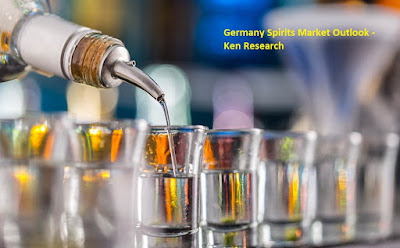The market of Germany with the dairy and soy food is attaining the highest attention as in the recent trend the population of this region has become more health conscious. Moreover, the significant increase in the disposable income the demand for dairy and soy food is growing more actively and positively in Germany. Not only has this, but the retailers of such products is also establishing the e-commerce platform for dominating the demand of the potential buyers. The growing demand of the products from the various sectors of the economy will lead the market growth more positively in the near future and make the market more competitive which is significantly beneficial for the investors.
According to the report analysis, ‘Country Profile: Dairy & Soy Food in Germany’ states that some of the major companies which are currently functioning in this market in a more auspicious manner for acquiring the huge market share by dominating the growing demand of dairy and soy food includes royal FrieslandCampina N.V., Muller Group, Ehrmann Ag, DMK Deutsches Milchkontor GmbH, Zott Se & Co. Kg, J. Bauer Gmbh & Co. Kg, Ornua Co-operative Limited, Groupe Lactalis SA, Karwendel-Werke Huber GmbH, Savencia SA, Arla, and several others. Whereas, Royal FrieslandCampina N.V. and Muller Group are the foremost market players in the segment. Many of the key players are distributing their product with the numerous distribution channels which include cash & carries and warehouse clubs, food & drinks specialists, hypermarkets & supermarkets, convenience stores, dollar stores, variety stores & general merchandise retailers, e-Retailers and others. Meanwhile, the hypermarkets and supermarkets are the major distribution channel in the German dairy and soy food segment.
Additionally, the effective packaging also leading the demand of the dairy and soy food products while, the players are using various types of packaging material for leading the highest market share which includes flexible packaging, paper & board, rigid metal, rigid plastics, and glass. However, rigid plastics are the most frequently used pack material in the German dairy & soy food sector. The major key players of this market are identifying the high potential categories and explore the further market opportunities which proved to be beneficial for both the players and the user.
In 2017, the per capita utilization of dairy and soy food is higher in Germany as compared to both the global and the regional levels. In 2017, the per capita depletion of milk is greater when compared to other dairy and soy food products in Germany while, the market of such products includes various items such as butter & spreadable fats, cheese, dairy-based & soy-based desserts, drinkable yogurt, from age frays & quark, milk, soymilk & soy drinks, and yogurt.
With the existence of various products and applications, it is expected that the market of Germany with the drinks and soy food sector will grow more significantly in the coming years over the decades with the more developed in the technologies of product making.
To know more, click on the link below:-
Related Reports:-
Contact Us:-
Ken Research
Ankur Gupta, Head Marketing & Communications
+91-9015378249









